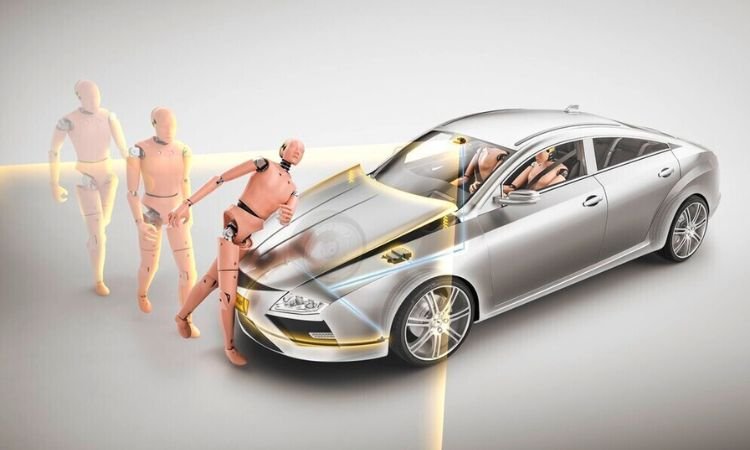The Future of Safety Analyzing the Automotive Pedestrian Protection System Market (2024-2032)

In an era where road safety is paramount, the global automotive pedestrian protection system market is poised for significant growth. The global automotive pedestrian protection system market size is projected to grow at a CAGR of 10% between 2024-2032. This growth is fueled by technological advancements, increasing safety regulations, and a heightened awareness of pedestrian safety. In this blog post, we will explore the various facets of this market, including its segmentation by technology, vehicle type, and regional dynamics.
Understanding Pedestrian Protection Systems
Pedestrian protection systems (PPS) are technologies designed to enhance the safety of pedestrians in the event of a collision with a vehicle. These systems can be broadly classified into two categories: active and passive systems.
Active Pedestrian Protection Systems
Active systems use technology to prevent accidents before they occur. This includes features like automatic emergency braking and collision avoidance systems, which utilize sensors and cameras to detect pedestrians in the vehicle’s path. When a potential collision is detected, these systems can automatically apply the brakes or take evasive action to minimize impact.
Passive Pedestrian Protection Systems
In contrast, passive systems focus on minimizing injury after a collision has occurred. This might involve designs that reduce the severity of impact, such as softer bumpers or energy-absorbing structures in the vehicle’s front end.
Both types of systems play a crucial role in enhancing pedestrian safety and are integral to the growing market for automotive safety technologies.
Market Size and Growth Projections (2024-2032)
The global market for pedestrian protection systems is on the rise, driven by several factors. The increasing number of vehicles on the road, urbanization, and a rising focus on safety regulations are key elements propelling market growth. As city populations expand and traffic congestion worsens, the need for effective pedestrian safety solutions becomes even more critical.
The projected CAGR of 10% signifies robust growth potential, as manufacturers invest heavily in research and development to innovate and enhance their safety features. This investment is also a response to stringent government regulations aimed at reducing pedestrian fatalities, which further incentivizes the adoption of advanced safety technologies.
Market Segmentation
By Technology
Active Pedestrian Protection Systems
Active pedestrian protection systems are increasingly becoming standard in new vehicle models. These systems not only contribute to pedestrian safety but also help reduce insurance costs for manufacturers by mitigating accident severity. Examples include systems that employ radar and cameras to detect pedestrians and automatically engage brakes when a collision is imminent.
Passive Pedestrian Protection Systems
Passive systems are also critical, as they protect pedestrians during collisions. Vehicle designs that incorporate softer materials and features that crumple on impact can significantly lower the risk of injury. Innovations in this area are gaining traction, particularly as consumer awareness of safety features grows.
By Type
Automatic Braking and Collision Avoidance
Automatic braking and collision avoidance systems are among the most significant advancements in active pedestrian protection. These technologies utilize advanced algorithms and sensor data to assess risks and initiate braking before a collision can occur.
Brake Assist
Brake assist systems enhance the effectiveness of braking in emergency situations. By detecting panic stops, these systems can apply additional braking force to reduce stopping distances, thereby protecting pedestrians.
Others
Additional technologies include pedestrian detection systems and alerts that notify drivers of nearby pedestrians, helping to foster a safer driving environment.
By Vehicle Type
The market segmentation by vehicle type reveals the importance of pedestrian protection systems across various categories:
- Passenger Vehicles: These account for the largest share of the market, driven by consumer demand for safety features.
- Commercial Vehicles: With increased scrutiny on logistics and delivery services, commercial vehicles are also integrating pedestrian protection systems.
- Two-Wheelers: As urban mobility evolves, two-wheeler safety features are becoming increasingly relevant.
By Component Type
Key components of pedestrian protection systems include:
- Sensors: These include radar, LIDAR, and cameras that are essential for detecting pedestrians.
- Software and Algorithms: Advanced software processes data from sensors to make real-time decisions about braking and collision avoidance.
- Other Components: This can encompass wiring, displays, and user interfaces that support the overall system functionality.
By Distribution Channel
The distribution channels for pedestrian protection systems include:
- OEM (Original Equipment Manufacturer): The majority of pedestrian protection technologies are integrated into vehicles at the manufacturing stage.
- Aftermarket: As awareness grows, aftermarket solutions are also being developed for existing vehicles.
Regional Analysis
The global automotive pedestrian protection system market exhibits varied growth rates across different regions.
- North America: Stringent safety regulations and a high prevalence of advanced safety technologies are driving growth in this region.
- Europe: European countries are leaders in adopting pedestrian safety regulations, leading to an increasing demand for innovative solutions.
- Asia-Pacific: Rapid urbanization and a growing vehicle population in countries like China and India make this region a crucial player in the market.
- Latin America and the Middle East & Africa: These regions are catching up as awareness and regulatory frameworks evolve.
Competitive Landscape
The competitive landscape of the pedestrian protection system market features a mix of automotive manufacturers and technology providers. Major players are investing in partnerships and collaborations to enhance their offerings. Companies like Bosch, Continental, and Delphi are at the forefront, integrating innovative technologies into their systems.
Recent Innovations
Key innovations include the integration of artificial intelligence (AI) and machine learning in pedestrian detection systems, which enhance accuracy and responsiveness. Additionally, advancements in sensor technology are making these systems more reliable and cost-effective.
Challenges and Opportunities
Despite the promising growth trajectory, the pedestrian protection system market faces challenges, including high implementation costs and the complexities of integrating these technologies into existing vehicle designs. However, the shift toward electrification and autonomous vehicles presents unique opportunities for innovation. As manufacturers pivot to electric and hybrid models, there is a growing potential to integrate advanced safety features seamlessly.
